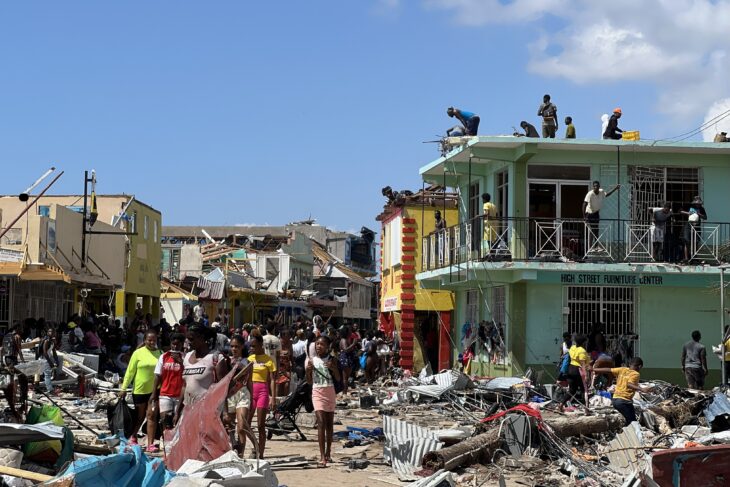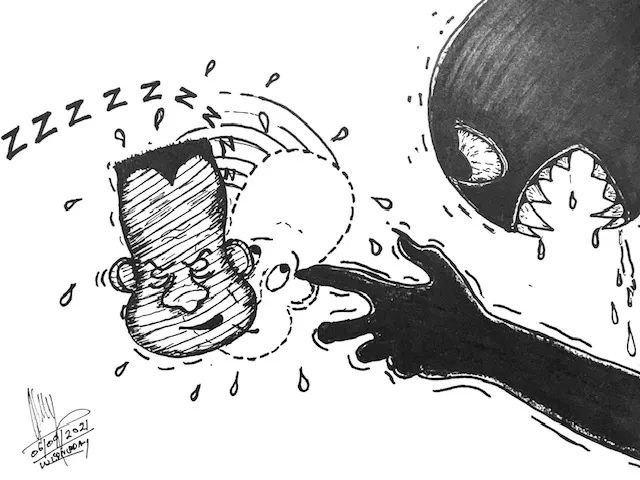
“The slave-holder knows wherein lies his power to enslave one class and trample upon another. He scatters abroad prejudice. And in order to do this, he scatters abroad ignorance, shrouding the whole region in a veil of mental darkness, debarring the poor freeman from the opportunity of educating his children; for ignorance, prejudice and crime are a triumvirate of tyranny, acting and reacting upon, producing and re-producing each other.”
J.G. Palfrey, 1848.
The Christian Bible recorded the account of the dramatic conversion of Saul of Tarsus, while he was on the road to Damascus to persecute Christians. Once a zealous, and a hate-filled persecutor of a group of fellow Jews whom he considered as a religious cult which had departed from orthodox Judaism, he saw the light. Well, not at first, as he was blinded by a light before he then saw the light.
After submitting to Christ it was stated that literal scales fell off his eyes — which, possibly, was symbolic of him coming to the truth, and about the error of his ways. As I thought about Saul, who, subsequently, assumed the name Paul, and about the second chance that he had been given to do the right thing, I thought about the second chance that has been given to whites and African Americans to reunite against the wealthy oligarchic forces now in the ascendancy under the aegis of the Trump Administration. Will the scales of their ignorance fall from their eyes?
Now, someone might have noticed and determined my usage of the word “reunite” in reference to American whites with African Americans as erroneous — given the ravages of hundreds of years of chattel slavery, from which white society benefited greatly, and given the continued mistreatment of African Americans post the Antebellum South in the era of racial segregation under the infamous Jim Crow laws. But, I want to assure my readers that there were no missed steps in my usage of the word “reunite”, as both racial and ethnic groups — more so poor whites and Black people who were freed from the bondage of slavery or who were born free — did come together, for a brief moment in time to confront the rich, and the powerful oligarchic forces of the plantocracy of the South.
Before Blacks and whites marched together to the Lincoln Memorial in Washington, D.C., to hear the Reverend Dr. Martin Luther King, Jr’s famous “I Have a Dream” speech, which was delivered on August 28, 1963, they had joined forces — to great effect — long before, which had bred much fear in the rich monied class.
Poor whites were as much against slavery as Black people were. The oppression and the brutality against the latter — having no rights under the law and working for their owners, who sometimes hired them out to work for others — is a well-known historical fact. But what, perhaps, is not familiar to many students of history is that poor whites resented African chattel slavery as well, because they could not compete against it in the labour market as the free labour of slavery undercut their bargaining power with respect to the paid labour that they brought to the table.
In a paper that was written and submitted by Jeffrey Glossner as a part of his dissertation for the degree of Doctor of Philosophy in the Department of History, The University of Mississippi, in August of 2023, he stated that:
“The so-called ‘poor whites’ of the antebellum South have often been overlooked by historians due to their perceived insignificance to the political and cultural development of the South. However, within the context of the sectional debate over slavery, poor whites represented a disturbing presence for elite southerners who sought to defend slavery on the basis of white supremacy, a political platform built on the promise of universal white superiority. In order to defend the slave labour system from northern promises of white supremacy under free labour and to justify widespread southern white poverty, the architects of the antebellum southern cultural ideal marginalized poor whites and depicted them as inferior creatures who did not deserve the privileges of southern white supremacy.
This dissertation argues that this discourse about poor whites played a significant role in the development of southern social and political culture, and stood at the nexus of central issues that contributed to crises that led to the Civil War. Proslavery elites feared poor whites due to their frequent interactions with enslaved black labourers that exacerbated southern fears of violent insurrection. The presence of poor whites caused tension with efforts to modernize slavery and adapt it to modern industries. And, most importantly, they appeared to be potential political allies to antislavery northerners.
The problem that poor whites posed to efforts to adapt slavery to the modern world resulted in the further radicalization of proslavery ideology and the emergence of anti-democratic ideas within the politics of slavery. These provided increased impetus for the southern slave owning elite to seek secession from the United States in order to protect the institution of slavery.”
That state of affairs in the economy created tension between poor whites and Blacks. And, yet, despite that tension, poor whites and Blacks had formed a friendly social bond otherwise. Dr. Keri Leigh Merritt, in her book, Leaderless Men – Poor Whites and Slavery in the Antebellum South, described the interaction between both racial groups in the following manner:
“Market-driven interracial dealings were exceedingly common, particularly in grog shops, brothels, and gambling houses. Forret described the relationship between the two underclasses as a complex, ‘curious mix of love and hate, equality and inequality. At times, shared economic deprivation and impoverishment tempered racial hostilities and drew slaves and poor whites together into civil, cordial, and even intimate and loving relationships.”
Thus, he concluded, “slave and poor white interaction both reinforced and challenged southern racial boundaries”.
“Despite masters’ best efforts, therefore, slaves and poor whites in plantation areas, towns, and cities had quite a bit of interaction — and some of those relationships, of course, were sexual. Although there were cases of relationships between poor white men and black women, most historians have studied the more commonly reported sexual interactions between poor white women and black men. Ira Berlin found that beginning in colonial times, the largest incidence of interracial sex in America occurred between white servant women and black men.
By the late antebellum period, Genovese asserted, ‘white women of all classes had black lovers and sometimes husbands in all parts of the South, especially in the towns and cities.’ Poor white women participated in the underground economy to a large extent, certainly more frequently than slave women. Forret estimated that impoverished women comprised about a quarter of all whites involved in the bi-racial trading network. Given how commonly they engaged in commerce with free blacks and slaves, miscegenation was all but inevitable. Whether abandoned, widowed, or simply alone while their men were gone for weeks or months at a time, these women had to make ends meet as best as possible. Sometimes they turned to black men as romantic lovers, and sometimes sexual favours were used as payments for goods. But one thing is certain: interracial sex between the lower classes happened with relative frequency.”
As time progressed the social relationships between whites and Blacks found some commonality in a fight against the rich oligarchic plantocracy elites for their rights as workers. The oligarchs soon came up with a strategy to blunt and to destroy that forward push against their political and economic power, by the Southern workforce, by using racism as a wedge between whites and Blacks to great effect.
The disdain for poor whites by the white elite never went away, but if giving the poor whites a sense of racial superiority over the Blacks and a false sense of social equality with them could help to retain their power, then that was a very small price to pay.
Just as then, in the American antebellum South, the oligarchs now, in our time, have the same degree of disdain for lower class whites as they do for African Americans. If anyone doubts that, then one only needs to observe the news reports and to peruse the Internet with the various blogs about white MAGA Republicans expressing rage, fear and regret in relation to what they have determined as a rank betrayal of their welfare by the Trump Administration in favour of the rich.
Perhaps whites will now see how the white power elite, the very rich one per cent among us, has used racism to keep them as well as African Americans down politically and economically. Perhaps this is a wake-up call that they ought to heed, and then reunite with people of colour, putting aside racism, in order to safeguard the welfare of all who live outside on the periphery of the wealthy oligarchs.
I close with the words of one, Hinton Helper — a white man of the South, who was much hated by the plantocracy — which he had penned in 1857, for white folks to ponder:
“The liberation of five millions of ‘poor white trash’ from the second degree of slavery, and of three millions of miserable kidnapped negroes from the first degree, cannot be accomplished too soon … It now behooves us to take a bold and determined stand in defence of the inalienable rights of ourselves and of our fellow men, and to avenge the multiplicity of wrongs, social and political, which we have suffered at the hands of a villainous oligarchy… If today we could emancipate the slaves in the Union, we would do it, and the country and everybody in it would be vastly better off tomorrow. Now is the time for action; let us work.”



